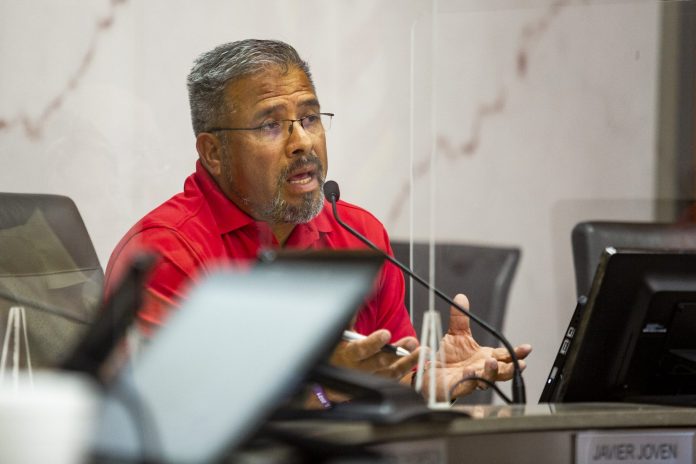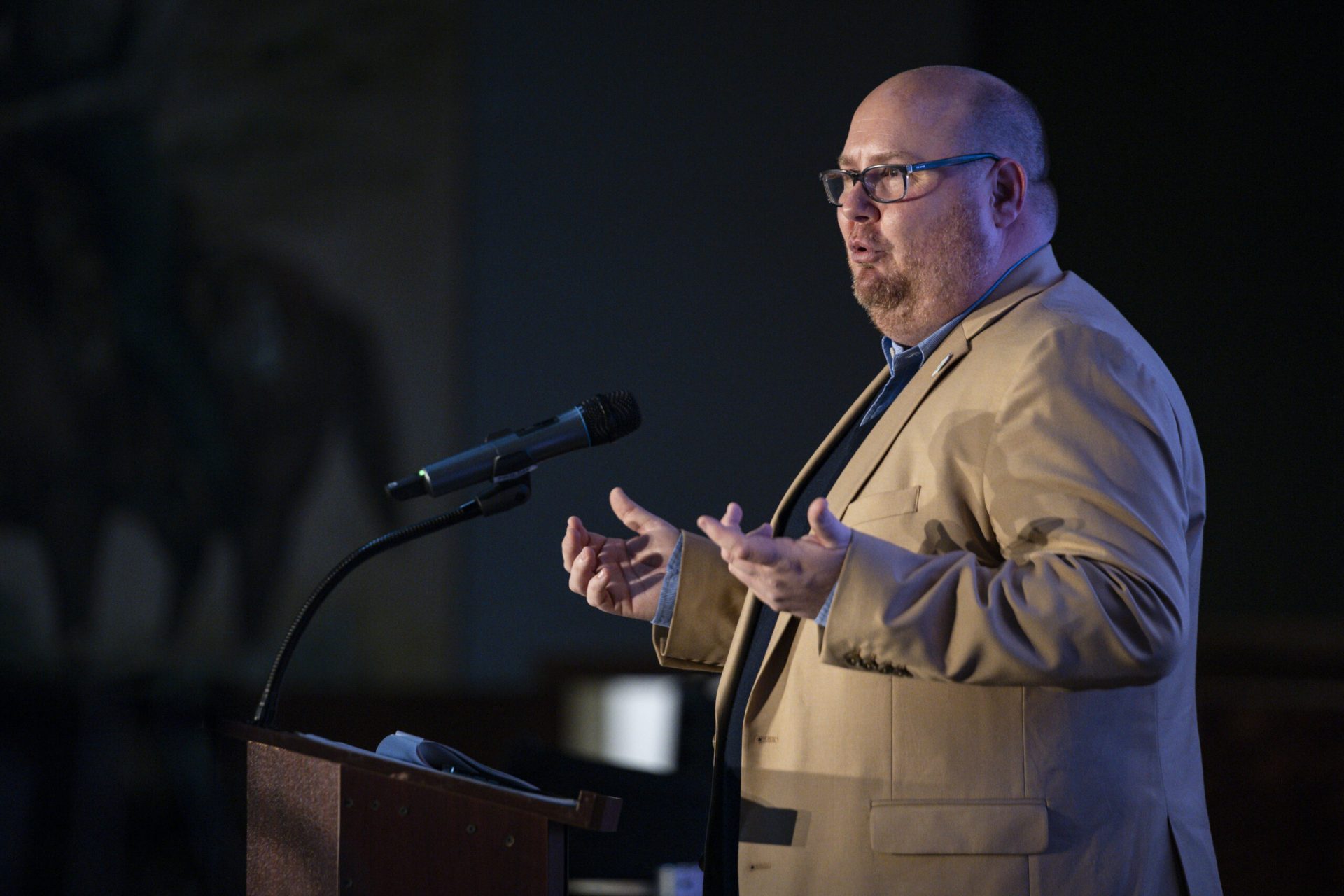
On Tuesday night, Odessa Mayor Javier Joven repeatedly said he wanted to dissolve the Tax Increment Reinvestment Zone, at least in part, because Odessa College didn’t want to participate anymore and Ector County wasn’t interested in joining. According to Odessa College Board of Trustee Chairman Gary Johnson and Ector County Judge Dustin Fawcett he was wrong.
The TIRZ was a special zone created by the city council in 2019 to attract new investment in an area. The taxes paid into the zone by Medical Center Hospital, Odessa College and the City of Odessa are supposed to be used to finance public improvements downtown.
The board is comprised of six council appointees and three appointees selected by MCH, OC and the City of Odessa.
Standing before the council Tuesday night TIRZ Chairman Craig Stoker said he thought the zone was in danger of being disbanded because of a misunderstanding of what the board was designed to do.

“Whether you feel that we’re misinformed, miseducated, that doesn’t matter,” Joven told Stoker. “The situation is this. There are three entities that participate in the TIRZ and it doesn’t work when they call me and request ‘We’re done.’”
Joven said he believes downtown can be revitalized or developed without the TIRZ because the right council and the right commissioners and hospital board are now in place.
“It really feels like everything’s in line to be able to create this new partnership. The one thing that they’re adamant about is they didn’t want to do it within the TIRZ. They thought it was limited, that it was too small,” Joven said.
In the end, the council voted 5-2 to dissolve the TIRZ and to divide up the $300,000 or so that’s in the bank between OC, Medical Center Hospital and the city based upon the amount they each contributed.
Johnson said he didn’t even know the city was considering dissolving the TIRZ until Stoker sent him a text Monday. He couldn’t attend Tuesday night’s meeting because it conflicted with the OC Board meeting, he said.
When asked if OC wanted to pull out, Johnson said, “No. We did not. We’ve invested quite a bit into downtown and we’ve always thought that with all of the entities working together we’d get more accomplished.”
Rather than placing it on the city council agenda, Johnson said he would have preferred having a meeting between the interested parties.
“They could have said, ‘This is what we’re looking at and here’s what we’re thinking,’” Johnson said.
Lack of communication is definitely an issue, he said.
Over the last several months, Stoker has been trying to set up a TIRZ meeting to discuss possible projects, but he’s been met with resistance at the city, Johnson said. There were some members on the TIRZ board that wanted to see the board disbanded, he said.
OC is determined to move forward with its downtown project, which includes a $12-$13 million building near its brand new splash pad, performance stages and green space at 4th and Jackson streets.
“Things can still be done if they’re willing to do it,” Johnson said.
Fawcett said he received a text from somebody about the TIRZ discussion during the council’s meeting. By the time he started watching the live stream, the council had voted.

Asked about Joven’s statement the county did not want to participate in the TIRZ, Fawcett said, “It’s not accurate for this Commissioner’s Court.”
Past court’s have not participated in the past for unknown reasons, he said.
“That is not the way the conversations went whenever I had them with the mayor. I expressed that I would be interested if that’s the avenue we’re going to go forward with for downtown development,” Fawcett said.
The judge said he was interested in using TIRZ funds for the county’s new library and for a new courthouse when that day comes and maybe even for a daycare facility.
“That was the direction we had discussed and then my understanding from those conversations was he said, ‘Well, I just don’t think that is the route we’re going to go.’ So, at no point did I ever say that we weren’t interested in the TIRZ board. In fact, it’s quite the opposite.”
Having said that, however, Fawcett said he still believes all of the entities can still come together and work on downtown projects together.

Medical Center Hospital CEO Russell Tippin confirmed, however, that the MCH board did want to withdraw from the TIRZ.
“Our stance on that is the money that we sent to TIRZ we believe we can use that better in delivering healthcare to the patients of Ector County,” Tippin said. “We got so much going on coming out of COVID that we need all of our money to stay in the healthcare part of it.”
While board member Wallace Dunn has expressed displeasure with how TIRZ money was spent, Tippin could not speak to the rest of the board’s thoughts.
“I don’t know how to classify that. I think our board just knows what we struggle with everyday to provide health care to the people of Ector County and the surrounding area and that any dollars we can put towards health care is money well spent,” Tippin said.
In recent months, Joven and other council members had made it clear they were not happy with the TIRZ. They declined to ratify the board’s re-appointment of Stoker as the chairman of the board and in May they asked Stoker to come before the council to discuss the board’s projects.
Since the TIRZ was formed, Stoker told the council it has raised roughly $500,000. There’s about $330,000 in the bank right now and the rest was spent on updating the downtown master plan, rehabbing parking lots at Fourth Street and Grant Avenue and placing 12 flowerpots along Grant.
On Saturday, Stoker said he wasn’t exactly surprised to see the dissolution on the city’s agenda, but he would have liked someone to have the courtesy to inform him ahead of time.
The TIRZ is expected to bring in $9 million during the next 20 years, but there have been misunderstandings from the beginning about where the board could spend that money, Stoker said.
“The first year we didn’t have any money and the mayor made it very, very clear we were never going to borrow against the TIRZ and that seems to be the failing because if you could have borrowed the $9 million, we would have had the money to do impactful projects,” Stoker said. “So, from the outset we were hamstrung…we’ve got to wait for the money to come in and we’re only ever going to get it in small bites so we’ve had to do things that fit into those budgets.”
During the May meeting, Dunn told the council the hospital would vote in favor of disbanding the TIRZ if asked. Although the hospital is in the downtown area it hasn’t benefited from it at all, he said. The flower pots mentioned by Stoker stopped two blocks short of the hospital.
TIRZ Vice President Jeff Russell and the mayor both expressed their disgust that money was spent updating the 2016 downtown master plan, saying the updated plan merely “regurgitated” the old one.
In another show of disgust, the city council voted in May to terminate the $650,000 contract of KDC Associates, the landscape architect hired in November to design and oversee a downtown entertainment district that was supposed to be paid for with a portion of a $93 million certificate of obligation passed by the council in August 2019.
Joven and council members Denise Swanner and Mark Matta had voted against the KDC contract to begin with because of the amount and the details of the plan. KDC wanted to spend $7 million focusing on a two-block section of Jackson Avenue.
KDC chose Jackson Avenue over Texas Avenue, at least in part, because the two-year project would have a detrimental impact on traffic and parking along Texas Avenue and Jackson Avenue is closer to the Marriott and Odessa College’s new plaza.
Joven insists the downtown festival street was never supposed to be part of the certificate of obligation that was passed. On Tuesday, however, he said that issue has been fixed and the city still has $6 million to invest in downtown.
When Joven voted to fire KDC Associates, he complained, in part, about the delays on the downtown project and the size of the project.



